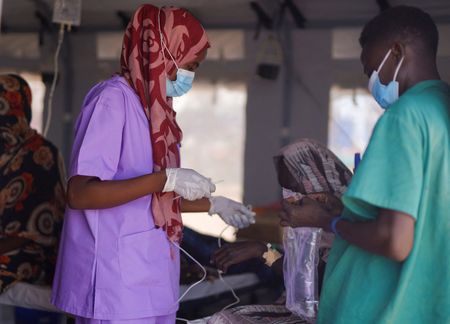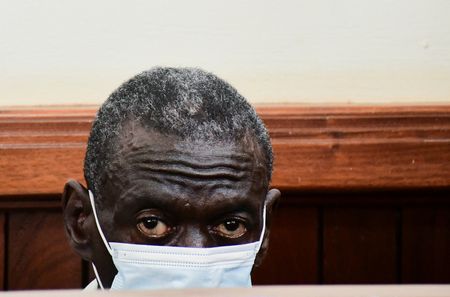(Corrects spelling of interior minister’s first name in paragraph 8 to Paulo from Palo)
PRAIA (Reuters) -At least eight people were killed after flooding on Cape Verde’s Sao Vicente island overwhelmed emergency services and cut key roads, a regional civil protection councillor said on Tuesday.
On Monday morning torrential rains lashed the northern island in the Atlantic archipelago located off West Africa, swamping roads and sweeping away vehicles and people.
Municipal councillor Jose Carlos da Luz told a state broadcaster seven people had died in floods and one person was electrocuted, adding that three others were still missing.
In a report on Monday, the International Federation of Red Cross and Red Crescent Societies put the death toll at nine and said 1,500 people had been displaced on Sao Vicente.
Sao Vicente usually records 116 mm of rain in a year, according to Cape Verde’s meteorology institute. But early on Monday 193 mm fell in just five hours, according to Ester Brito, an executive at the institute.
“It is a rare situation because what was recorded is above our 30-year climatological average,” she told Reuters, adding that in just two hours more rain fell than the island typically receives annually.
The U.S. National Hurricane Center said on Monday that Tropical Storm Erin was located about 280 miles (455 km) west-northwest of Cape Verde and packing maximum sustained winds of 45 miles per hour (75 kph).
Interior Minister Paulo Rocha said on Monday that floodwaters disrupted transport across Sao Vicente and severed the main road to Cesaria Evora International Airport, though the facility remained operational. Rockfalls also blocked traffic.
“It was a difficult night marked by panic and despair,” Rocha told public radio, adding that first responders were inundated with distress calls.
Rescue and cleanup operations were ongoing, but Rocha said authorities were mobilising resources that would allow the island to quickly return to normal life.
(Reporting by Julio Rodrigues; writing by Ayen Deng Bior; editing by Anait Miridzhanian and Mark Heinrich)






